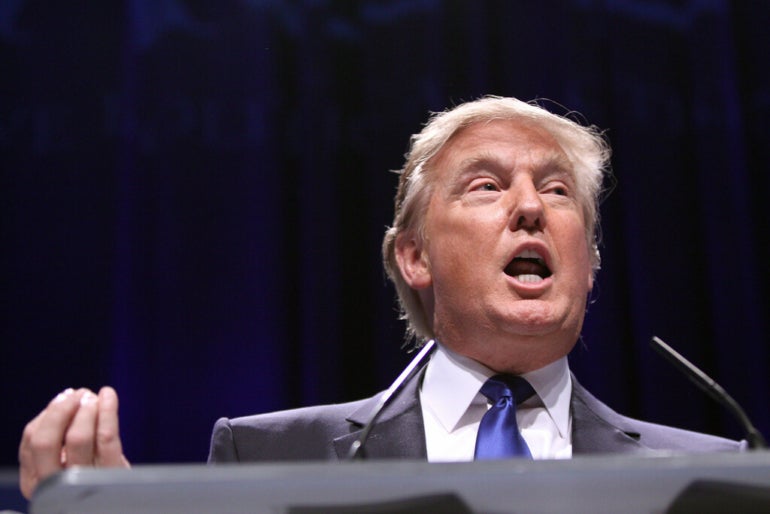How Trump’s Tariffs Could Drive Up Tech Prisies


President Donald Trump has imposed tariffs that would result responses the north American tech landscape, adding $ 50 billion in new costs for canada and mexico alone. The tariffs – 25% on all importants from canada and mexico, 10% on chinese goods, and 25% on european union tech components like semiconductors – are set to disrupt supple Pries, and Push Major Tech Firms Toward Domestic Production.
By March 12, Imported Steel and Aluminum will be hit a 25% tariff, and by april 2, chips and other critical eu tech components will follow. With 80% of us foundry capacity for key semiconductor sizes currently on china and taiwan, experts predict ripple effects across the entient tech sector – impacting Eve Smartphones and cloud services to ai infrastructure.
See: Trump’s Import Tariffs: How They’ll Shake Pries, Jobs, And Trade
How will these tariffs affect big tech and consumers?
Higher Prisis for Hardware and Cloud Services
The new tariffs are expected to increase prises access the tech sector, Affecting Everything from Smartphones and Laptops to Cloud Storage and Ai Computing Power.
The Us relaes on China and Taiwan For approximately 80% of its foundry capacity for 20-45nm chips and about 70% for 50-180nm chips, according to industry research. Tech Firms May Attempt to Shift Sourcing to Tariff-Free Countries like India and Vietnam, but many will pass the additional costs to consucers instead.
Manufacturers of Consumer Electronics Such as Laptops and Smartphones may also be affected if they important components from their products in Tariffed Country. Indeed, Apple primarily manufactures its iphones in china, so the handsets may see a price hike in the us
Data Centers and AI Infrastructure Face Higher Costs
The tariffs on aluminium and step will start data center companies, to these materials are essential for server raks, cooling systems, and other infrastructure, Driving Up Constipment COSTRUPMENTRE.
The additional Expenditure and Potential Supply Chain Disruption may be reflected in Cloud Storage Pries from the Likes of AWS, Google Cloud, and Microsoft Azure, as well as saas and ai companies that are up Large-scale data processing. It could also delay plans to build new data centers that companies have earmarked to meet the growing demand for ai.
See: Microsoft to Invest $ 80 Billion in AI Data Centers in Fiscal 2025
Nevertheles, The International is to Reduce Dependence on Foreign Adversaries, and while this May Result in Higher Pries for Consures in the Short Term, it also also also in Drives Industment Supply Chain resilience.
North America’s Supply Chain at Risk
“(The us is) a big producer, it’s a big consumer,” Christine McDaniel, Senior Research Fellow at the Mercatus Center, Told Bloomberg“We have products going back and forth across the border, you know, several times before it ends in a finished product.”
Mcdaniel Added that Mexico and Canada will pay over $ 50 billion in tarifs for important tech and chips into the us, “And that’s gonna come out of the North American Economy.” Canada Mines Essential Raw Materials Like Nickel and Cobalt, While Mexico Handles Component Assembly, Testing, Testing, and Packaging for Major Manufacturers Such as Foxconn.
“That will all really hurt the pricing power of the us,” mcdaniel said. “IT’LL Eather Eat into their profit margins or they’ll pass it to us consumers.”
Gil Luria, Head of Technology Research at Da Davidson, Told Bloomberg That part of the reason trump has implemented tariffs on goods from the eu is in retaliation for the region “Making a habit” of finger us companys, such as apple, google, and for “Whatsver behavior they Choose to penalize. ” He added that the eu may become “combative” in response, and the level to which it does will determine the scale of the tariffs’ impact on the big tech players.
See: Meta to take eu regulation concerns directly to trump, says Global Affairs Chief
Tech Companies ramp up US manufacturing
Even prior to the tariffs, many companies have been announcing plans to build new facilites with the us, which is a trend likely to continue.
This week, tsmc pledged to expand its spend on building data centers in the US to $ 160 billion, which it deems the “Largest Single Foreign Direct Investment in Us History.”
Last month, Apple Announced It Will Spend $ 500 Billion On manufacturing and research in the us over the next four years. In January, the stargate project was launched, which is the likes of softbank, openai, and oracle dedicate $ 500 billion to generative ai infrastructure in the US, Including Data centers.
In the press conference for this week’s TSMC Investment, Us President Trump Added that there are still “Many (More Companies)) that Want to Annance” Construction Projects Stateside. Such Companies could absorb the business of foreign competitions in the chip, cloud, and other hardware markets.
Why is Trump Imposing Tariffs?
Tariff Increases, Even Against Top Us Trade Partners, Were A Key Feature of President Trump’s 2024 Election Campaign. After he won and assumed the presidency, He made good on his word and announced his plan to impose 25% tarifs on Goods from canada and mexico as early as februry 1st. The next day, he announced a 10% tariff on goods from China.
Historically, the us has always been on a trade deficit, Importing more Goods Than It Exports. However, the deficit has been steadily increasing Since 2001, and in 2023, the US Trade Deficit in Goods was the World’s Larget at Over $ 1 Trillion. Tariffs help close the deficit by increase prices It can also inventivize manufacturers to move their operations to the US











